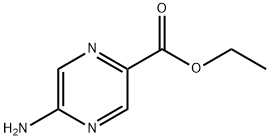The question "Is n-propanol the same as isopropanol?" arises in the context of understanding different isomers of alcohols and their chemical properties. N-propanol (1-propanol) and isopropanol (2-propanol) are both alcohols with the molecular formula C3H8O, but they have different structures.
Related questions could include:
1.What are the physical differences between n-propanol and isopropanol?
2.How do n-propanol and isopropanol differ in their uses or applications?
Is n propanol the same as isopropanol?
Related Products More >
-
- 108-80-5
- USD 50.0000
- 50kg
-
- 108-78-1
- USD 4.5000
- 25kg
-
- 4559-86-8
- USD 750.0000
- 170kg
-
- 77182-82-2
- equest For Quotation
-
- 70131-50-9
- equest For Quotation



 沪ICP备2021018848号-5
沪ICP备2021018848号-5

Physical Differences:
Boiling Point: N-propanol has a boiling point of 97.2°C, which is higher than isopropanol's boiling point of 82.6°C. This makes n-propanol more volatile than isopropanol.
Solubility and Density: Both are miscible with water, but n-propanol is slightly less dense than isopropanol, and their solubility in water is influenced by their molecular structure.
Viscosity and Evaporation Rate: N-propanol tends to have a higher viscosity and slower evaporation rate compared to isopropanol, which is often used for cleaning purposes due to its rapid evaporation.
Chemical Differences: While both alcohols are used as solvents, disinfectants, and in industrial applications, their reactivity can differ. For example, n-propanol tends to be a slightly stronger solvent due to its higher molecular weight and less branched structure, which allows it to interact more effectively with certain solutes. Isopropanol, on the other hand, is commonly used in products like rubbing alcohol and hand sanitizers, mainly due to its lower toxicity and ability to evaporate quickly, leaving behind fewer residues.
Applications:
N-propanol: It is commonly used as a solvent in the pharmaceutical and cosmetic industries. N-propanol also has applications in making lacquers, perfumes, and as an intermediate in chemical synthesis.
Isopropanol: Isopropanol is widely used in cleaning products, rubbing alcohol, and as a disinfectant. It is also used in the pharmaceutical industry for dissolving oils, resins, and other non-polar compounds.
Safety Considerations: When using either alcohol, it's essential to be aware of their toxicity. Isopropanol is generally less toxic than n-propanol but still can cause significant irritation to the eyes, skin, and respiratory system. Both should be used with caution in well-ventilated areas, and gloves should be worn during handling to prevent skin irritation. Additionally, both alcohols are flammable, so they should be kept away from open flames or heat sources.
Derivatives and Further Inquiry:
What are the primary industrial uses of n-propanol and isopropanol? This question can lead to a deeper exploration of their roles in chemical production, pharmaceuticals, or as industrial solvents.
Can n-propanol be used as a cleaner instead of isopropanol? This inquiry explores their comparative effectiveness in cleaning applications, particularly in laboratory or medical settings where rapid evaporation is necessary.
n-propanol: Also known as 1-propanol, it has the hydroxyl group (-OH) attached to the first carbon atom in the propane chain. Its structure is CH3CH2OH. It has a relatively straight chain structure and a higher boiling point of about 97.2°C.
isopropanol: Also called 2-propanol, the hydroxyl group is attached to the second carbon atom, with the structureCH3CH2(OH)CH3. It has a more branched structure and a lower boiling point of around 82.5°C. Isopropanol is more commonly used as a solvent and disinfectant due to its stronger solvency and faster evaporation rate compared to n-propanol.